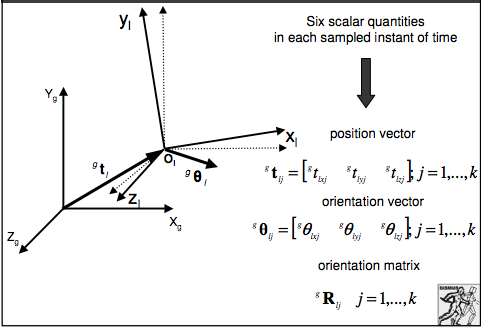Check out m stop motion animation that goes with my project! https://www.youtube.com/watch?v=sfZ2NiUSu28
Saturday, November 28, 2015
Instantaneous 3D bone pose
In order to describe the pose of the bones in a ridged body we use a reference frame with local coordinates using bone points and invariant time. This reference frame is called the instantaneous 3d bone pose.
The most complicated aspect of the pose is the mathematical description. One must describe the position and orientation of the bone (local reference plane) with respect to a global reference plane.
In the case of the 3D bone pose there are six scaler quantities, each on a sampled instant of time, a position vector, orientation vector, and a orientation matrix. The orientation matrix of the local frame with respect to
the global one is defined by a 1st column the xl axis versor (Versor is a templated class that holds a unit quaternion. The difference between versors and quaternions is that quaternions can represent rotations and scale changes while versors are limited to rotations) components, the second column, the yl axis versor components, and the third column, the zl axis versor components. The three components stated above are the cosines of the angles between each versor and the XYZ global axes. Here is a numerical description of the pose vs time (3-D case).
Subscribe to:
Post Comments (Atom)



No comments:
Post a Comment